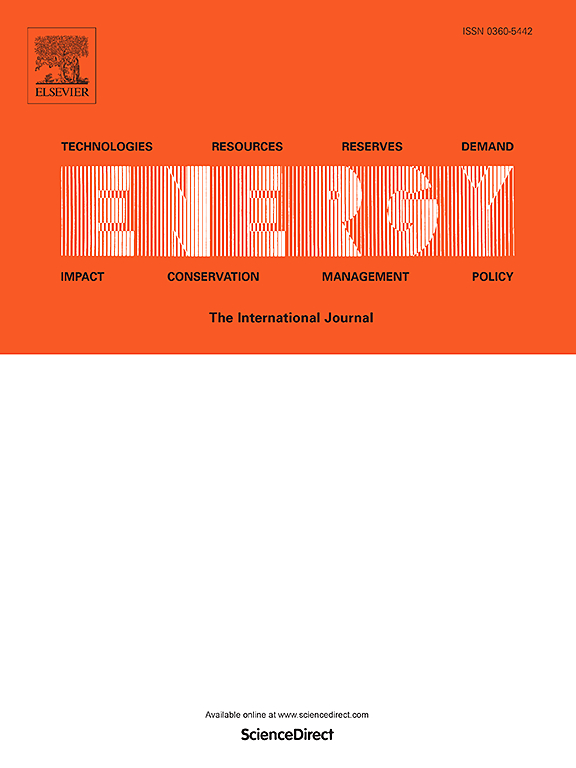二茂铁对生物柴油-柴油混合燃料燃烧特性影响的实验及ReaxFF-MD模拟研究
IF 9
1区 工程技术
Q1 ENERGY & FUELS
引用次数: 0
摘要
生物柴油粘度高,与柴油混合燃烧不完全。添加燃烧催化剂已成为缓解这些问题的有效方法。二茂铁具有较高的油溶解度,适合作为燃烧催化剂,但其对生物柴油-柴油共混物燃烧特性的影响机理尚不清楚。本研究通过TG-FTIR-MS实验和ReaxFF-MD模拟,系统阐明了二茂铁对麻疯树生物柴油-柴油混合物(BD50)热解、氧化、污染物排放特性的影响,以及主导反应机理。结果表明,二茂铁使BD50热解和氧化的活化能分别降低了5.85 kJ/mol和6.30 kJ/mol。二茂铁促进燃料与氢在热解过程中的抽氢反应,生成更多的H2。二茂铁通过促进燃料与O2、·OH和·OOH的吸氢反应来促进BD50的氧化过程。二茂铁使CO排放量减少24.9%,NOx排放量增加21.9%,烟尘粒径减少19.53%。研究结果为生物柴油清洁高效燃烧的发展提供了理论和实践指导。本文章由计算机程序翻译,如有差异,请以英文原文为准。
An experimental and ReaxFF-MD simulation study on effects of ferrocene on combustion characteristics of biodiesel-diesel blends
Biodiesel has high viscosity, leading to incomplete combustion when blended with diesel. Adding combustion catalysts has emerged as an effective method to mitigate these issues. Ferrocene possesses high oil solubility, making it suitable as a combustion catalyst, yet its influential mechanism on the combustion characteristics of biodiesel-diesel blends remains unclear. In this study, TG-FTIR-MS experiments and ReaxFF-MD simulations were conducted to systematically elucidate the impact of ferrocene on the pyrolysis, oxidation, pollutant emission characteristics of Jatropha biodiesel-diesel blends (BD50), as well as the dominant reaction mechanism. The findings indicate that ferrocene reduces the activation energy () of the pyrolysis and oxidation in the BD50 by 5.85 kJ/mol and 6.30 kJ/mol. Ferrocene promotes the hydrogen abstraction reaction of fuels with H in pyrolysis to produce more H2. Ferrocene boosts the oxidation process of BD50 by enhancing the hydrogen abstraction reactions of fuels with O2, ·OH and ·OOH. Ferrocene results in a 24.9 % reduction in CO emissions, a 21.9 % increase in NOx emissions, and a 19.53 % reduction in soot particle size. The findings provide theoretical and practical guidance for the development of clean and efficient combustion for biodiesel-diesel.
求助全文
通过发布文献求助,成功后即可免费获取论文全文。
去求助
来源期刊

Energy
工程技术-能源与燃料
CiteScore
15.30
自引率
14.40%
发文量
0
审稿时长
14.2 weeks
期刊介绍:
Energy is a multidisciplinary, international journal that publishes research and analysis in the field of energy engineering. Our aim is to become a leading peer-reviewed platform and a trusted source of information for energy-related topics.
The journal covers a range of areas including mechanical engineering, thermal sciences, and energy analysis. We are particularly interested in research on energy modelling, prediction, integrated energy systems, planning, and management.
Additionally, we welcome papers on energy conservation, efficiency, biomass and bioenergy, renewable energy, electricity supply and demand, energy storage, buildings, and economic and policy issues. These topics should align with our broader multidisciplinary focus.
 求助内容:
求助内容: 应助结果提醒方式:
应助结果提醒方式:


